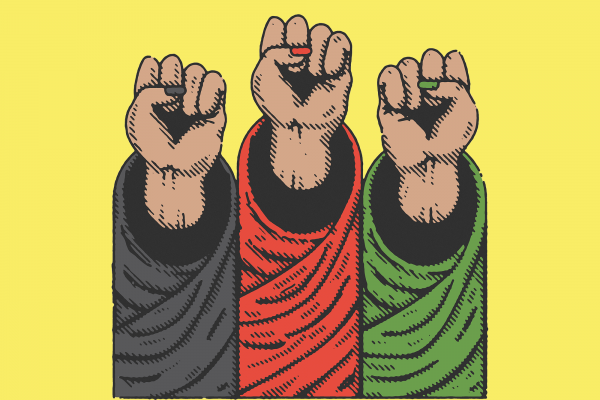AFGHANISTAN HAS BEEN in conflict for more than 40 years. The former Soviet Union sent in more than 150,000 troops on Christmas Eve 1979 and left 20 years later. The U.S. began a massive bombing campaign in October 2001, the first stage of the war to oust the Taliban. Now, 20 years later, the U.S. has withdrawn the last American troops. It is hard to find a single Afghan, including myself, who hasn’t been a victim of the ongoing conflict.
As Afghans know, parties in these battles change, but the outcomes—devastation and killings—remain the same. Ordinary Afghans, as we have seen with the recent Taliban resurgence, pay an immeasurable price. They are killed, bombed, displaced, and disabled. However, the voices of these ordinary people are rarely heard. Perhaps they no longer raise their voices. What speaks loudly is their pain and sorrow.
Despite numerous formulas and prescriptions for ending bloodshed and oppression in Afghanistan, violence remains. Most solutions were formulated by the elite class. They are the ones in the driver’s seat. They make decisions as they please. The wishes of ordinary Afghans are nowhere to be found.
Ordinary Afghans did not raise a critical voice during the U.S.-Taliban peace deal signed under the Trump administration in early 2020 that resulted in the withdrawal of U.S. forces. Rarely has the Afghan public stood up to the conflictual parties to forcefully put out the ferocious fire burning down their house. Ordinary Afghans appear to be hopeless about change. Violence is assumed to be the only currency for transformation.
Existing notions about power are a major cause for Afghan passivity. As long as ordinary Afghans believe that only violence, or the threat of violence, can change their situation, they will not be capable of developing the potential for positive change. In my experience, it is only through nonviolence that individuals learn their potential power for change.
Since 2011, I have trained more than 1,400 youth, activists, women, religious scholars, and tribal leaders throughout Afghanistan. Our teams have translated many training materials on nonviolence into local languages. I’ve translated three books on nonviolence into Pashto. These trainings have produced some remarkable responses—especially given the atmosphere of retaliation. The philosophy of these workshops is to empower the target groups for change.
Nonviolence has a rich history in the region, particularly the legacy of the Khudai Khidmatgar, a predominantly Pashtun nonviolent resistance movement against British colonial rule in the 1930s, under the inspiration of Abdul Ghaffar Khan. Nonviolent civic mobilizations have also been carried out during the current conflict, particularly the 2018 Helmand Peace March, in which thousands from around the country streamed into Kabul to protest war.
An extensive knowledge of nonviolent civic mobilization is the most effective way to change Afghans’ attitude and behavior. Nonviolent civic mobilization taps into their potential for change. Not only that, but nonviolent civic mobilization empowers ordinary Afghans through peaceful tactics that can be utilized in more organized and disciplined campaigns aimed at changing the status quo.
Only when ordinary Afghans mobilize strategically and peacefully will they become part of the existing power equation. Only then can they pressure warring factions toward a peaceful solution. However, know-how on nonviolence is limited and needs to be contextualized for Afghanistan. This calls for training in nonviolence to precede mass mobilization. Education comes before mobilization.

Got something to say about what you're reading? We value your feedback!





